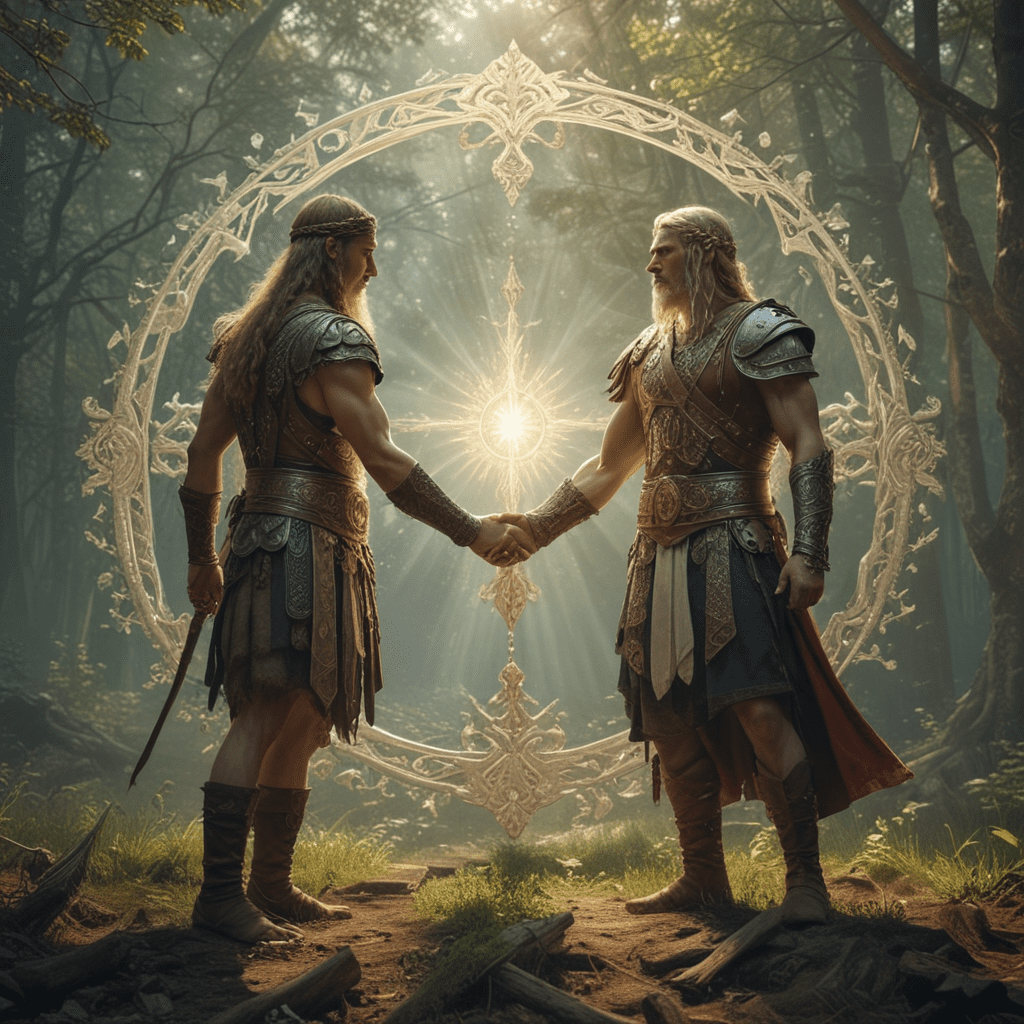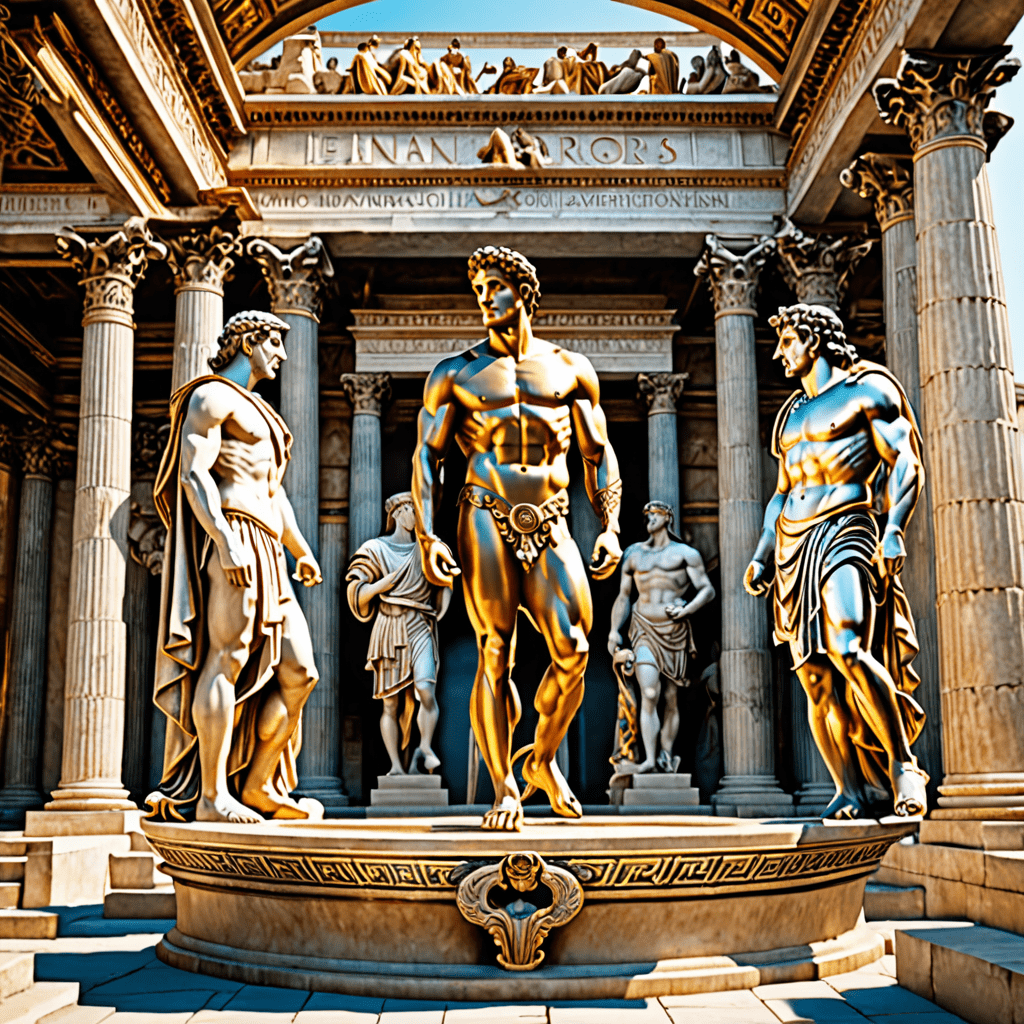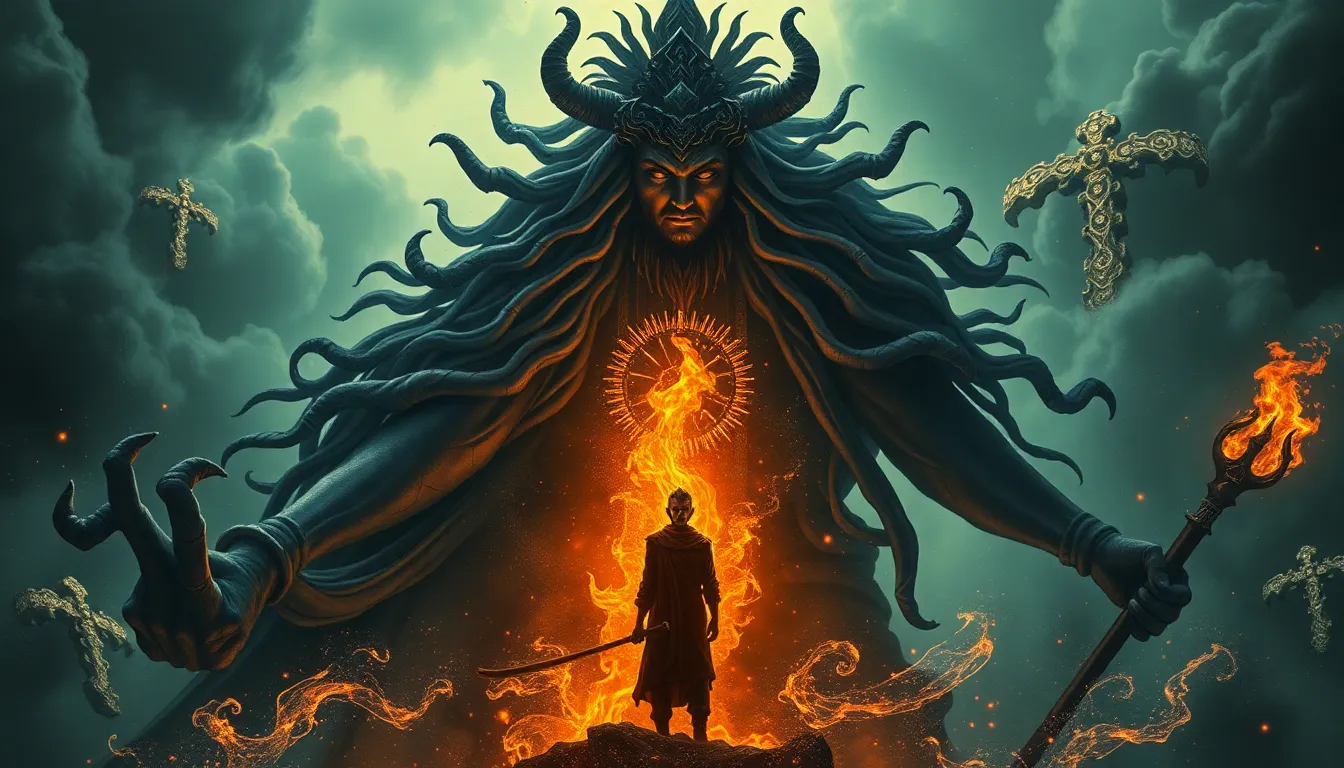The Influence of Finnish Mythology on Traditional Crafts
## I. Introduction
Finnish traditional crafts have a rich and distinctive history, deeply intertwined with the country's ancient mythology. The influence of Finnish mythology can be seen in various aspects of artistic expression, from the motifs and symbolism used to the supernatural beings depicted in traditional crafts. This vibrant mythology has played a significant role in shaping the cultural heritage of Finland, contributing to its unique identity.
## II. Origins of Finnish Mythology
The origins of Finnish mythology can be traced back to the pre-Christian era, when the ancestors of the Finns lived in close proximity to nature and relied on animistic beliefs to explain the world around them. Through storytelling and oral traditions, a rich body of myths and legends emerged, embodying the Finnish people's experiences, values, and fears. These myths have been preserved over centuries and continue to inspire contemporary artistic practices.
## III. The Nature of Finnish Mythology
Finnish mythology is characterized by its deep connection to the natural world. The forests, lakes, and landscapes of Finland are imbued with a sacred and mysterious aura, believed to be inhabited by a host of supernatural beings. These beings, which include spirits, deities, and mythical creatures, play a central role in Finnish mythology and are often depicted in traditional crafts. The interplay between nature and the supernatural realm is a recurring theme in Finnish folklore, reflecting the close relationship between the Finnish people and their environment.
## IV. The Role of Nature in Finnish Crafts
The abundance of natural resources in Finland has greatly influenced the development of traditional crafts. Wood, metal, leather, and textiles have been used for centuries to create a wide range of functional and decorative objects, from furniture and tools to clothing and jewelry. The materials used and the techniques employed often reflect the mythological significance of nature in Finnish culture. For example, the use of birch bark in traditional crafts is believed to bring good luck and protection, as the birch tree is considered sacred in Finnish mythology.
## V. Supernatural Beings and Crafts
Supernatural beings, such as spirits, deities, and mythical creatures, are central characters in Finnish mythology and are often depicted in traditional crafts. These beings can be both benevolent and malevolent, and their images are often used to ward off evil spirits or bring good fortune. For example, the thunder god Ukko is often depicted on traditional crafts as a symbol of protection and strength, while the water spirit Näkki is believed to guard the waters and bring good luck to fishermen.
## VI. Symbolism and Motifs in Crafts
Finnish mythology is replete with symbols and motifs that have been incorporated into traditional crafts. These symbols often represent natural phenomena, supernatural beings, or abstract concepts related to Finnish culture and beliefs. For example, the use of the swastika motif, known as the "Thunder Cross," represents the thunder god Ukko and is believed to bring good luck and protection. Other common motifs include the bear, which symbolizes strength and courage; the moose, associated with hunting and virility; and the egg, a symbol of fertility and new beginnings.
## VII. The Influence of Epic Poetry on Crafts
The Kalevala, Finland's national epic poem, has had a profound influence on Finnish traditional crafts. The characters, events, and mythological themes depicted in the Kalevala have inspired countless works of art, including furniture, textiles, and jewelry. For example, the hero Väinämöinen, renowned for his wisdom and musical abilities, is often represented in wood carvings and textile designs. The symbolism and imagery used in the Kalevala have permeated Finnish culture and continue to influence artistic expression in various crafts.
## VIII. Regional Variations in Mythology and Crafts
Finnish mythology and its influence on traditional crafts vary regionally across the country. Different regions have their own unique interpretations of mythological themes and characters, leading to distinctive artistic styles and techniques in crafts. For instance, in the eastern region of Karelia, a strong tradition of storytelling and rune singing has influenced the intricate embroidery and decorative arts found in the area. In contrast, the northern region of Lapland is known for its Sami crafts, which incorporate motifs and beliefs related to the Sami people's close connection to the Arctic environment.
## IX. The Impact of Christianization
The Christianization of Finland during the Middle Ages had a significant impact on Finnish mythology and traditional crafts. While many mythological beliefs and practices persisted, Christian symbols and motifs began to appear in crafts alongside traditional mythological elements. This blending of influences created a distinctive Finnish aesthetic that combined elements of both pre-Christian and Christian traditions. Christian imagery, such as crosses and saints, can be found in many traditional crafts, often alongside mythological motifs representing nature and supernatural beings.
## X. Conclusion: The Enduring Legacy of Finnish Mythology in Crafts
Finnish mythology has left an enduring legacy in traditional crafts, infusing them with symbolism, motifs, and narratives that reflect the unique worldview and cultural heritage of Finland. From the use of natural materials and the depiction of supernatural beings to the influence of epic poetry and regional variations, Finnish mythology continues to inspire and inform contemporary crafts. These crafts serve as a testament to the power of mythology to shape cultural traditions and artistic expression.
## FAQ
Q: What is the role of nature in Finnish mythology?
A: Nature is central to Finnish mythology, with forests, lakes, and landscapes believed to be inhabited by supernatural beings. Crafts often reflect this connection to nature, utilizing natural materials and incorporating motifs representing the natural world.
Q: How does Finnish epic poetry influence crafts?
A: The Kalevala, Finland's national epic, has been a major source of inspiration for traditional crafts. Characters, events, and mythological themes from the Kalevala are depicted in wood carvings, textiles, and jewelry, among other artistic mediums.
Q: Are there regional variations in Finnish mythology and crafts?
A: Yes, different regions of Finland have their own unique interpretations of mythological themes and characters, leading to distinctive artistic styles and techniques in crafts. For example, Karelia is known for intricate embroidery, while Lapland is renowned for Sami crafts influenced by the Arctic environment.
Q: How did Christianization impact Finnish mythology and crafts?
A: Christianization introduced Christian symbols and motifs into Finnish crafts, which blended with traditional mythological elements to create a unique Finnish aesthetic. Crosses and saints can be found alongside motifs representing nature and supernatural beings, reflecting the merging of pre-Christian and Christian beliefs.



